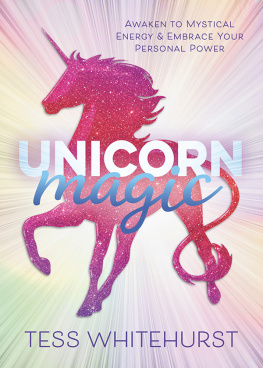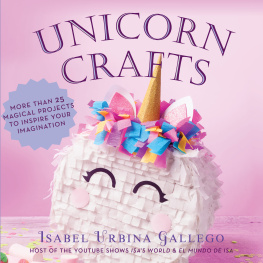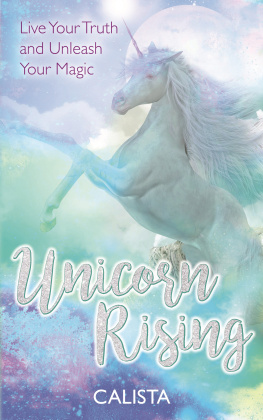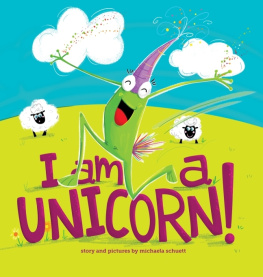Kathryn Hinds - Unicorns
Here you can read online Kathryn Hinds - Unicorns full text of the book (entire story) in english for free. Download pdf and epub, get meaning, cover and reviews about this ebook. year: 2013, publisher: Cavendish Square Publishing, LLC, genre: Religion. Description of the work, (preface) as well as reviews are available. Best literature library LitArk.com created for fans of good reading and offers a wide selection of genres:
Romance novel
Science fiction
Adventure
Detective
Science
History
Home and family
Prose
Art
Politics
Computer
Non-fiction
Religion
Business
Children
Humor
Choose a favorite category and find really read worthwhile books. Enjoy immersion in the world of imagination, feel the emotions of the characters or learn something new for yourself, make an fascinating discovery.
- Book:Unicorns
- Author:
- Publisher:Cavendish Square Publishing, LLC
- Genre:
- Year:2013
- Rating:4 / 5
- Favourites:Add to favourites
- Your mark:
- 80
- 1
- 2
- 3
- 4
- 5
Unicorns: summary, description and annotation
We offer to read an annotation, description, summary or preface (depends on what the author of the book "Unicorns" wrote himself). If you haven't found the necessary information about the book — write in the comments, we will try to find it.
The unicorn is a symbol of purity. Treat your readers to quotes from literary and historical sources, abundant images and illustrations, and a fascinating narrative about the history of the majestic unicorn.
Unicorns — read online for free the complete book (whole text) full work
Below is the text of the book, divided by pages. System saving the place of the last page read, allows you to conveniently read the book "Unicorns" online for free, without having to search again every time where you left off. Put a bookmark, and you can go to the page where you finished reading at any time.
Font size:
Interval:
Bookmark:


To Alena
Published in 2014 by Cavendish Square Publishing, LLC
303 Park Avenue South, Suite 1247, New York, NY 10010
Copyright 2014 by Cavendish Square Publishing, LLC
First Edition
No part of this publication may be reproduced, stored in a retrieval system, or transmitted in any form or by any meanselectronic, mechanical, photocopying, recording, or otherwisewithout the prior permission of the copyright owner. Request for permission should be addressed to Permissions, Cavendish Square Publishing, 303 Park Avenue South, Suite 1247, New York, NY 10010.
Tel (877) 980-4450; fax (877) 980-4454.
Website: cavendishsq.com
This publication represents the opinions and views of the author based on his or her personal experience, knowledge, and research. The information in this book serves as a general guide only. The author and publisher have used their best efforts in preparing this book and disclaim liability rising directly or indirectly from the use and application of this book.
CPSIA Compliance Information: Batch #WS13CSQ
All websites were available and accurate when this book was sent to press.
LIBRARY OF CONGRESS CATALOGING-IN-PUBLICATION DATA
Hinds, Kathryn, 1962-Unicorns / Kathryn Hinds. p. cm.(Creatures of fantasy) Includes bibliographical references and index. Summary: Explores the mythical and historical backgrounds of unicorns including winged horses such as Pegasus, the karkadan of India, the Syrian dajja, the Tibetan windhorse, and the Chinese qilinProvided by publisher. ISBN 978-0-7614-4928-7 (hardcover) 978-1-62712-055-5 (paperback)ISBN 978-1-60870-684-5 (ebook) 1. Unicorns. I. Title. GR830.U6H56 2013 398.2454 dc23 2011046274
Editor: Deborah Grahame-Smith Art Director: Anahid Hamparian Series Designer: Michael Nelson
Photo research by Debbie Needleman. The photographs in this book are used by permission and through the courtesy of: Front Cover: Jacana/Photo Researchers, Inc. Back Cover: Fol.17v How Alexander the Great (356-323BC) Mounted Bucephalus, from the Histoire du Grand Alexandre (detail), 1460 (vellum) by French School (15th c.). Musee de la Ville de Paris, Musee du Petit-Palais, France. Giraudon/ The Bridgeman Art Library. Page i: Erich Lessing/Art Resource, NY; pages ii iii, 43: akg-images/Newscom; page : Mirrorpix/Newscom.
Printed in the United States of America
Front cover: The unicorn as we typically picture it: a majestic, horned white horse roaming mysterious, magical forests.
Back cover: Alexander the Great astride his unicorn steed, as imagined by a French artist in 1460.
Half-title page: A thirteenth-century unicorn.
Title page: The unicorn takes center stage in a scene of Asian animals painted in 1412 to illustrate a book about the travels of Marco Polo.
CONTENTS
INTRODUCTION
ONE
MAGICAL HORSES
TWO
ONE-HORNED WONDERS
THREE
POWER AND PURITY
FOUR
THE MAIDEN AND THE HUNT
FIVE
THE MARVELOUS HORN
SIX
UNICORNS OF EAST ASIA
SEVEN
A REAL CREATURE?
GLOSSARY
TO LEARN MORE ABOUT UNICORNS
SELECTED BIBLIOGRAPHY
NOTES ON QUOTATIONS
INDEX

An illustration from a 1491 German book shows a maiden taming a unicorn.
INTRODUCTION
In the CREATURES OF FANTASY series we celebrate the deeds of dragons, unicorns, and their kin. These fabulous beasts have inhabited the imagination and arts since the beginnings of human history, immortalized in paintings and sculptures, mythology and literature, movies and video games. Todays blockbuster fantasy novels and filmsThe Chronicles of Narnia, Harry Potter, Lord of the Rings, Eragon, and othershave brought new popularity to the denizens of folklore, myth, and legend. It seems that these creatures of the imagination have always been with us and, in one way or another, always will be.
Belief in the fantastic, in wonders, appears to be a lasting part of the human experience. Even if we no longer believe that dragons and unicorns actually exist, we still like to think about what the world might be like if they did. We dream and daydream about them. We make up stories. And as we share those dreams, read and tell those stories, we not only stir our imaginations, but also explore some of the deepest hopes and fears of humanity. The power of the dragon, the purity of the unicorn, the mystery of the sphinx, the allure of the mermaidthese and more are all part of our human heritage, the legends of our ancestors still alive for us today.

The unicorn, a symbol of the purified soul, seen in an illustration for the 1937 edition of W. B. Yeatss book The Vision.

MAGICAL HORSES
There were horses... white horses rushing by, with white, shining riders... there was a horse without a rider, and someone caught me up and put me upon him, and we rode away, with the wind, like the wind....
Then I saw the horses we were on had changed to unicorns.
~W. B. YEATS AND LADY GREGORY, THE UNICORN FROM THE STARS, 1908
U NICORNS. WHEN YOU HEAR THE WORD, the first thing you think of is probably a glorious white horse whose forehead sprouts an elegant, spiraling horn of gold, silver, or ivory. This is the magnificent animal we usually see and read about in movies and fantasy novels. It is a shining creature of magic, mystery, and romance. The vision or dream of such a unicorn lifts and empowers the spirit, as a character says in The Unicorn from the Stars, a play by the Irish writers William Butler Yeats and Lady Augusta Gregory: I saw the unicorns.... I knew something was going to happen or to be said... something that would make my whole life strong and beautiful like the rushing of the unicorns. Unicorns like these are among the many fabulous horses that have long featured in stories all over the world.
WINGED STALLIONS
The first-century Roman author Pliny the Elder reported that East Africa was home to many monstrosities[including] winged horses armed with horns, called Pegasi. For most ancient Greeks and Romans, though, there was only one Pegasus. This famous winged (but hornless) stallion was the child of the sea god Poseidon and the snake-haired monster Medusa. When the hero Perseus cut off Medusas head, Pegasus was born from her blood and leaped immediately into the air. As [Pegasus] glided above the clouds and beneath the stars, the sky was its earth, wrote the Roman poet Ovid.
After a number of adventures, Pegasus became the steed of Zeus, the king of the gods. A few other Greek deities also had winged horses. Most famously, ancient artists depicted these marvelous creatures pulling the chariots of the sun god Helios and the moon goddess Selene. Flying horses have appeared in the traditions of other cultures, too. For example, in Thailand there was the winged stallion Tipaka, who belonged to a legendary king named Sison. The most beautiful of all horses, Tipaka was not only able to fly through the heavens, but was also fantastically fast. In fact, all King Sison had to do was tell Tipaka where he wanted to go, and they were there almost before the king was done speaking.
Font size:
Interval:
Bookmark:
Similar books «Unicorns»
Look at similar books to Unicorns. We have selected literature similar in name and meaning in the hope of providing readers with more options to find new, interesting, not yet read works.
Discussion, reviews of the book Unicorns and just readers' own opinions. Leave your comments, write what you think about the work, its meaning or the main characters. Specify what exactly you liked and what you didn't like, and why you think so.

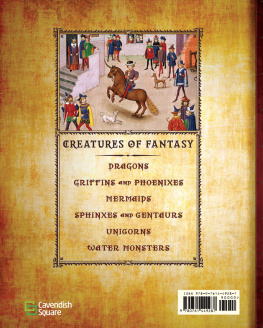
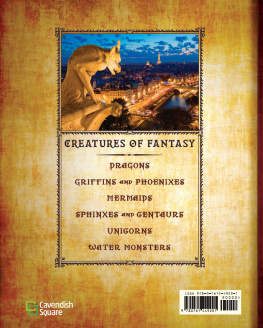
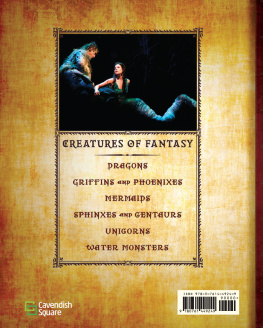
![Rodzher ZHelyazny - Unicorn Variations [Anthology]](/uploads/posts/book/911998/thumbs/rodzher-zhelyazny-unicorn-variations-anthology.jpg)
